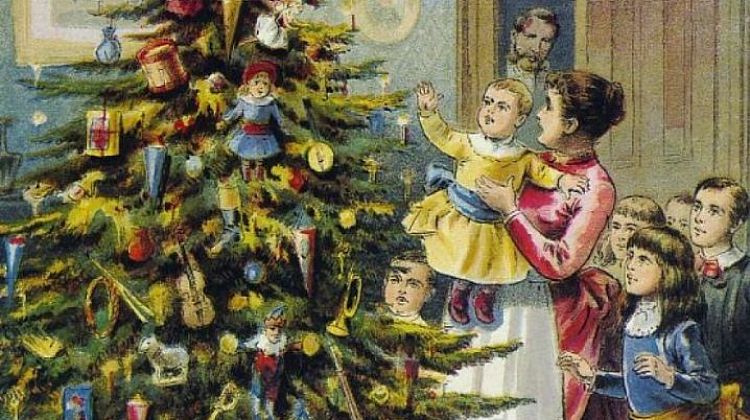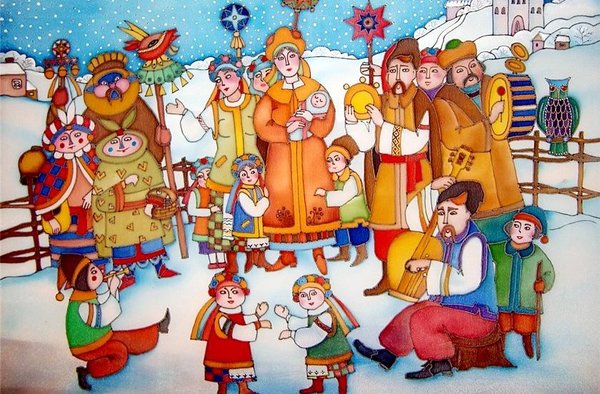Old New Year or Orthodox New Year
Saturday, January 14 Orthodox New Year 2023
In this article:
Why is Old New Year celebrated on January 13-14?
Old New Year is an unofficial yet beloved holiday in Russia and some other countries, which got its name due to the transition to the so-called “new style”. It is celebrated annually on the night of January 14th.
The tradition of celebrating this holiday is associated with the divergence of two calendars: the Julian (originated during the time of Julius Caesar) or the “old style” calendar on which the Eastern Church still relies – and the Gregorian – the “new style” calendar. This discrepancy in the XX-XXI centuries is 13 days, so the New Year according to the old style is celebrated on the night of January 13-14.
The emergence of the holiday is due to the fact that Christmas, according to the calendar tradition, should precede the New Year, and also to the fact that in Orthodox Church Gregorian calendar, the secular (or usual) New Year falls on Christmas Fast that bans plentiful feasts, eating fast food and entertainment.
History of the Old New Year in Russia

In Russia, the history of the Old New Year began after the revolution.
Before it, the Julian calendar was used in the Russian Empire but in 1918 the Bolsheviks decided to switch to the Gregorian style, according to which most European countries already lived by that time.
Calendar reform
In the West, a new chronology was introduced in the 16th century during the calendar reform by Pope Gregory XIII in order to correct a “mistake” in the Julian system. The fact is that in the old calendar, the time between the spring equinoxes was 11 minutes longer than it really was. By the time Russia switched to the Gregorian calendar, this time span had already increased by 13 days. And so, January 1, according to the old style, began to correspond to January 14, according to the new one. By the middle of the 20th century, all countries of the world were already using the Gregorian calendar.
The Orthodox Church did not support the change introduced by the Soviet regime and continued to rely on the Julian calendar, although Russian society already lived according to the Gregorian calendar.
That is why Russian Orthodox Christians still celebrate Christmas on January 7, and not on December 25.

Traditions for the Old New Year
Today, the Old New Year is an unofficial, but still beloved holiday by many. Unlike January 1, it is not celebrated on a grand scale, but this is a great time to visit your parents, spend an evening with your family, or think of something that you did not have time to wish yourself and your loved ones for the main New Year.
The tradition of setting the table and saying goodbye the previous year is preserved in many families. In the evening, one raises a glass, and at midnight – makes a wish.
In modern Russian culture, the Old New Year completes a series of traditional winter holidays, including the regular New Year (Jan 1st) and Christmas (Jan 7th).
After celebrating Old New Year, the period of winter holidays unofficially ends. As a rule, after January 14 in Russian houses they begin to remove decorations and dismantle Christmas trees.
Old Russian traditions
According to old Russian traditions, on January 14 (January 1, according to the old style), the countdown of the new agricultural year began. In the folklore calendar, January 14 was called Vasily’s Day.
The eve was called SHEDRYY (“generous”). At home, people used to set the table and prepared treats to be shared with others, it was also considered a good omen to get hired on this day.
On this day, children went from house to house with songs, like carols, threw grain, and cackled like geese, imitating animals – according to pagan ideas, this contributed to fertility and good harvest. Sometimes carolers dressed in fur coats turned inside out and scary masks. The meaning of dressing up is also archaic: a caroler disguised in a scary costume helped to scare evils from the house. “New Year’s” carolers were not allowed into the house but were presented with treats outside the threshold or through the window.
Today, the tradition of singing carols in Russia has disappeared but has been preserved in Ukraine and Belarus.
Old New Year in other countries
The New Year is celebrated twice not only in Russia, but also in the expanses of the former USSR, and in a number of other countries.
This tradition has been preserved in many former Soviet republics, in the countries of Eastern Europe where Orthodoxy is practiced, as well as among the peoples who still count time according to the Julian calendar.
The original and ancient customs of celebrating the New Year in the old style have come down to our days in some cultures. Here are some of them.
Like in the old times, in Belarus and Ukraine, the evening before the Old New Year is called Shchedryy Vechir (generous evening).”
The holiday got its name from the tradition of preparing a generous kutya for it, as well as setting a “rich” table after the Nativity Fast. There is a tradition to sing “sowing carols” wishing good harvest and prosperity.

In Abkhazia, on January 14, the Day of the Creation of the World is celebrated – Azhyrnykhua (Khechkhuama). This holiday is a public holiday and is declared a non-working day.
The habit of celebrating the Old New Year lives among the inhabitants of the former Yugoslavia.
In Serbia, it is called “Serbian New Year”, or Mali Bozic (Little Christmas), in Montenegro – Prava Nova Godina (Proper New Year).
In North Macedonia, carnivals are held on the New Year according to the old calendar.
Greece: on the night of January 14, in anticipation of St. Basil’s Day in Greece, children put their shoes by the fireplaces, where St. Basil should put gifts.
In Romania, for the Old New Year, it is customary to bake pies with surprises: coins, rings, and hot peppers.
In the German-speaking regions of Switzerland, the old-style St. Sylvester’s Day is celebrated on January 13.
There is an analog of this holiday in Wales as well called Hen Galan. For more than 250 years, a community of 200 Welsh farmers in the west of the UK celebrated this peculiar holiday on January 13th. On this day they have a day off. Hen Galan is celebrated according to the traditions of the ancestors with songs, carols, and local homemade beer. For local residents, Hen Galan is a holiday of good neighborliness and “open doors”.
Old New Year is celebrated in southern Tunisia and Algeria by the Berbers, the indigenous population of North Africa. Their holiday is called Yennayer. It is celebrated with a festive dinner, which must necessarily include meat dishes, especially chicken. Dried fruits and sweets are also served.
You may find it interesting:
Russian Honey Cake Medovik – Step-by-step Recipe
20 Facts about Russia You Didn’t Know
Russian Alphabet and Reading Rules
Read and Listen in Russian – List of Resources
